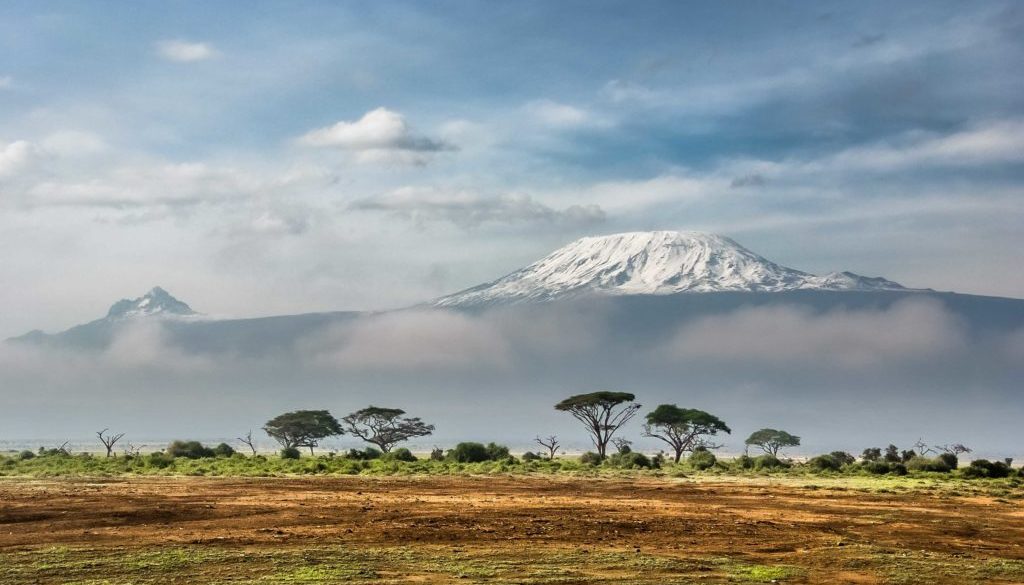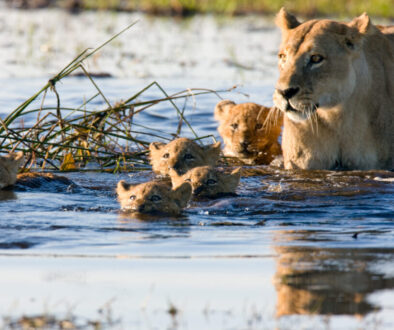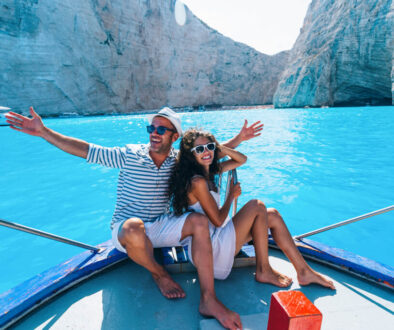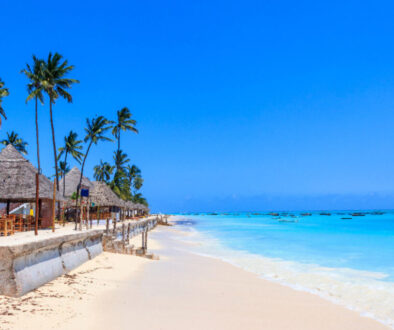Destination Kilimanjaro: Does It ‘Peak’ Your Interest?
One step in front of the other. After 7 days of hiking through jungle, hot sun, arid desert, rain, fog, hail, wind and snow we are almost at the summit. And finally, after hiking all night, we make it to the summit just as the sun is rising. And here we stand at 5,895m on Uhuru Peak, the roof of Africa, on the top of Mt. Kilimanjaro (with a bonus surprise at the top!)
Mt. Kilimanjaro is one of the world’s seven summits, representing the highest peak on Africa’s continent. Located in Northern Tanzania it attracts an estimated 25,000 climbers per year but for those attempting the 4-5 day routes only 10% will reach the summit. As Kilimanjaro does not require any technical climbing skills many people underestimate its seriousness. At TravelSafe Clinic we’d like to prepare you for a successful climb. Keep on reading for tips about choosing your route, tour company, packing, and high altitude.
Choose your route
The Marangu route is the classic route up Kilimanjaro and is usually sold as a “5 day, 4 night” trip. This route is often named the “Coca-Cola” route as accommodation is in bunkhouses rather than camping. Many people who attempt this route do not successfully summit as there is little time to acclimatize to the high altitude. There are at least 9 other routes which involve camping and are usually sold as 6-9 day packages. Choosing a longer route will provide more opportunity to acclimatize to the high altitude. We chose the 8 day Lemosho route, which has a high success rate and provided us with sufficient time for acclimatization. This route begins in rainforest and travels upwards through moorlands, arid desert, and glacial zones. It is considered one of the most scenic routes on Kilimanjaro!
Choose your tour company
Trekkers must book through a licensed agency and be accompanied with a guide. Do your research as your success greatly depends on the support of your tour company. TripAdvisor is a great place to look for climber’s reviews. The cost of a trek can range from USD $1,000 to USD 5,000+. You can find a great company for less than USD $5,000 but don’t cheap out as you may be sacrificing gear and guide experience. You may find some discounted packages by booking your trek and safari with the same tour company. Some important considerations when choosing your tour company:
- How many people in a group? Your experience will vary greatly if you are a group of 25 versus a group of 2-6 people
- Ask about gear and ensure it’s high quality (you don’t want to wake up in a puddle if it rains!)
- Ask about the guide’s experience and ensure that medical checks are included and oxygen is provided (our guide carried oxygen throughout the entire trek and checked our blood pressure, pulse, oxygen saturation and breath sounds twice per day)
- Is the company a member of KPAP (The Kilimanjaro Porter’s Assistance Project)? The KPAP’s website isn’t lying when it says that “the porters are the heart and soul of your trek.” The porters carry the heavy gear, cook and serve food, and ensure you are well looked after. KPAP ensures that partner companies are in compliance with guidelines for the proper treatment of porters, to ensure that they are paid fairly and do not carry more than the maximum allowable weight.
What to pack?
From hot humid jungle, to dry desert and glaciers. Be prepared for sun, rain, cold and snow. Layers are key!
- Hiking boots (well worn in!)
- Camp shoes (it feels so good to get your feet out of your boots after a day of trekking)
- Headlamp and extra batteries
- Hiking poles
- Breathable, waterproof shell jacket
- Breathable, waterproof pants
- Down jacket
- Fleece jacket
- Fleece pants
- Moisture-wicking long sleeve shirts and t-shirts
- One to two base layers (tops and bottoms)
- Hiking socks (with a variety of cushioning)
- Sock liners (for summit night and to prevent blistering)
- Sun hat
- Warm hat
- Glove liners
- Warm, waterproof gloves for summit night
- Sunglasses
- Gaiters (we didn’t use these but many people swear by them to keep the dust off)
- Day pack (large enough to carry your water, camera, lunch and layers)
- Waterproof duffel bag (the porters will carry this)
- Water bladder (3 L) or water bottles
- Warm sleeping bag
- Sun screen
- Lip balm
- Wet wipes
- Electrolytes (i.e. hydralyte)
- Snacks (although we didn’t end up eating most of our snacks as we were extremely well fed on our trek)
- Blister bandaids
- Camera and extra batters (Our iphones and gopro didn’t work at summit due to the cold)
- Medications: ciprofloxacin, diamox, immodium, ibuprofen, antiemetic, antimalarials (if needed)
- Cash for tipping guides and porters
- Cards or book for down time
Much of this gear can be rented in town before starting the climb. We rented waterproof duffel bags, waterproof pants, and a warm jacket for summit night. I wouldn’t recommend renting boots as these should be well broken in and moulded to YOUR feet to prevent blisters.
The highs of Kilimanjaro – coping with altitude
After months of preparation and years of dreaming everyone climbing Kilimanjaro has the same goal – reaching the summit. Unfortunately many travellers arrive under-prepared, ascend too quickly, and fail to reach the summit. Proper acclimatization is not possible for many trekkers and so most people suffer to some degree of acute mountain sickness (AMS).
AMS is a genetic trait that varies from person to person. It is not dependent on the degree of physical fitness and it is not possible to predict the risk of AMS. The only predictor of AMS is how you reacted on a previous trip to high altitude – if there were previous problems at high altitude then these are likely to return on Kilimanjaro.
Symptoms of AMS may be mild and include headache, fatigue, lack of appetite, nausea, insomnia, dizziness, and general malaise. A small number of people can develop more severe symptoms of High Altitude Pulmonary Edema (HAPE) or High Altitude Cerebral Edema (HACE). Symptoms of HAPE include a dry cough and shortness of breath at rest, when “it becomes impossible to finish a sentence without gasping for breath.” In addition to AMS symptoms, HACE causes profound lethargy, drowsiness, confusion, slurring of speech, and difficulty walking in a straight line. If symptoms of HACE or HAPE appear a person requires immediate descent and medical attention. Both HACE and HAPE can be fatal if a person does not descend to a lower altitude.
Keep in mind the following tips about high altitude to help you prepare for a successful climb:
Pole pole
- You will hear the phrase “pole pole” countless times on the mountain. This is the Swahili word for slowly and your guides will say it to you over again. Heed this expression and make sure you walk “pole pole!”
- Allowing more time to acclimatize will help for a successful summit. Consider choosing a longer route instead of a 4-6 day route or add an extra day or 2 to your ascent.
- If possible, hike nearby Mt Meru (4,565m) or Mt Kenya (4,895m) before your climb up Kilimanjaro.
- If you plan on visiting Ngorongoro Crater (2,286m) do so before Kilimanjaro. Sleeping here for the last few nights of your safari will help to acclimatize for Kilimanjaro (especially for those living at sea level in Vancouver!)
- Don’t try keep up with the porters! Most of the porters have spent a considerable amount of time on the mountain. Even when you feel like you are keeping a good pace your porters will fly by you. Remember to walk pole pole!
Climb high, sleep low
During the day climb higher than your sleeping altitude to encourage acclimatization. Follow your guide’s advice if an acclimatization walk is recommended after you’ve reached camp.
Consider your meds!
- Consider taking diamox (acetazolamide) to speed acclimatization, starting two days before ascending and continuing until reaching the summit.
- Bring ibuprofen or acetaminophen to treat headache caused by AMS
- Bring an antiemetic to treat nausea/vomiting caused by AMS. Ginger is a natural alternative to anti-nausea medications that may cause drowsiness.
- Avoid alcohol and sleeping pills
Stay hydrated!
Drink 2-3 L of water per day (more on summit day). Urine should remain clear and hydration is absolutely necessary even if you do not feel thirsty (fluid loss from breathing greatly increases at high altitude).
Recognize the symptoms AMS and know your limits!
People with mild symptoms of AMS can safely remain at high altitude and treat headache and nausea. If symptoms continue to worsen while resting at the same altitude then you must descend at least 300m. Listen to your guides if they advise you to turn around. Your guides want nothing more for you to summit so recognize the seriousness of your symptoms if they are telling you to turn around. Reaching the summit of Kilimanjaro is not worth your life! And remember that the journey doesn’t end at the top. You also need the strength to get back down
Recommended reading: “Kilimanjaro: The Trekking Guide to Africa’s Highest Mountain” by Henry Stedman




